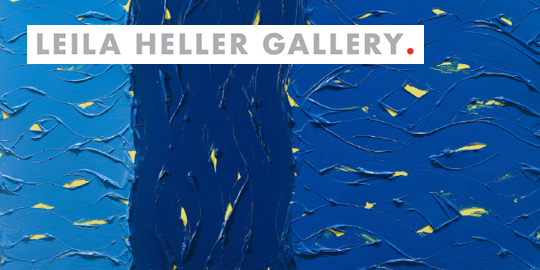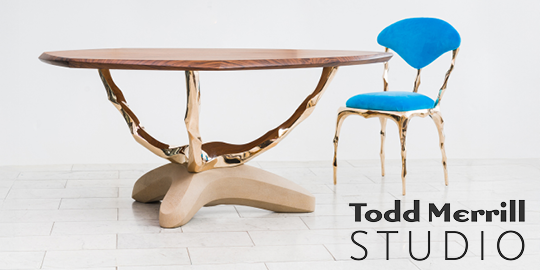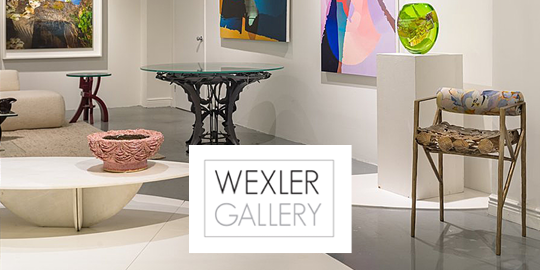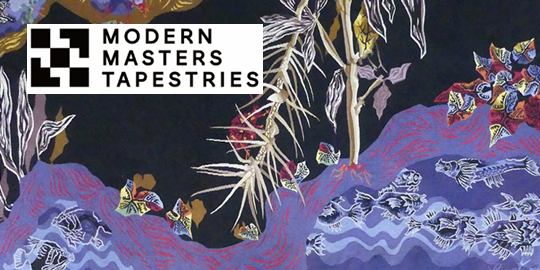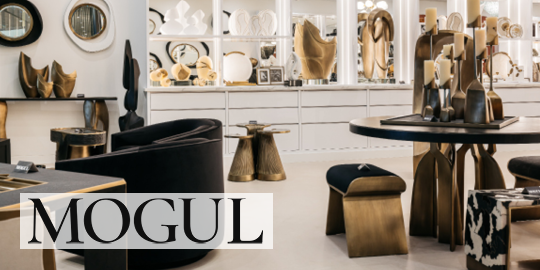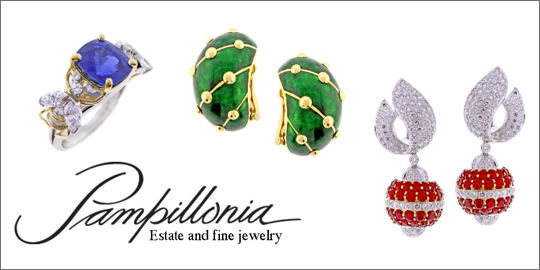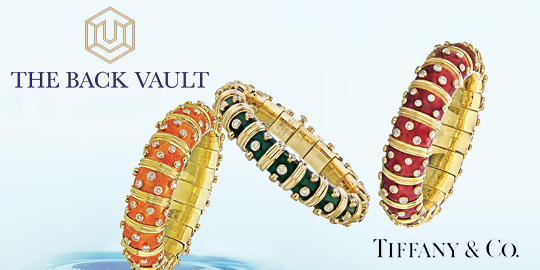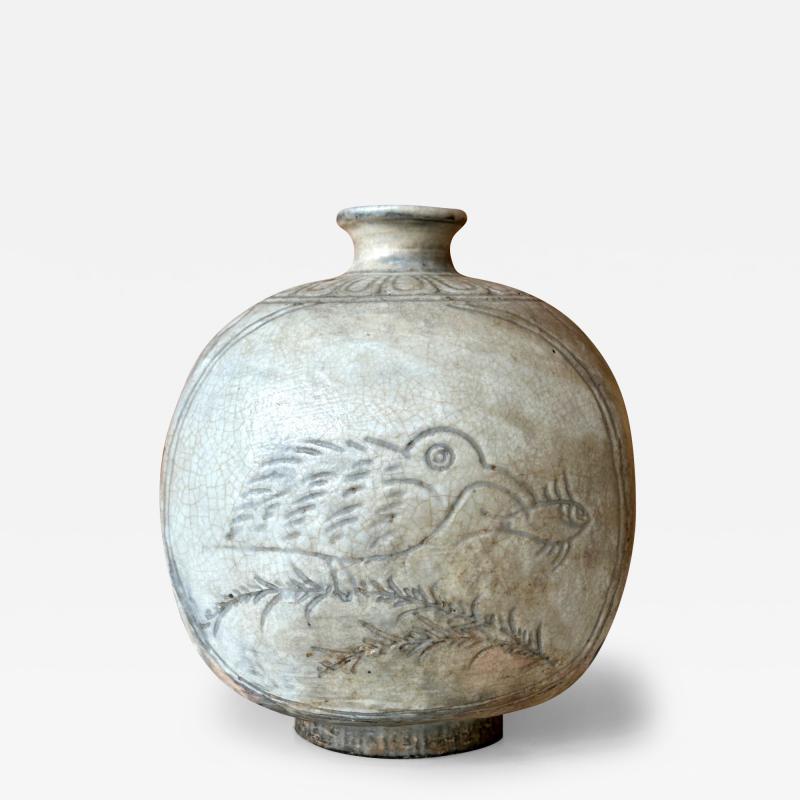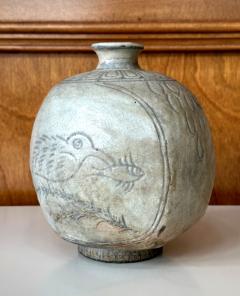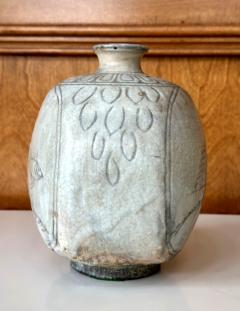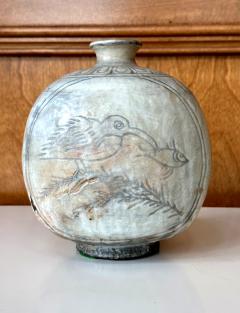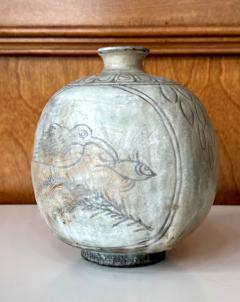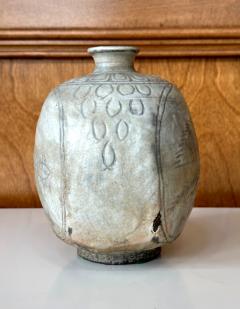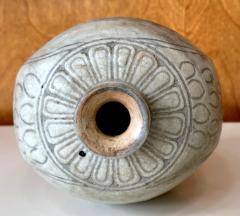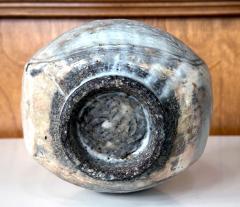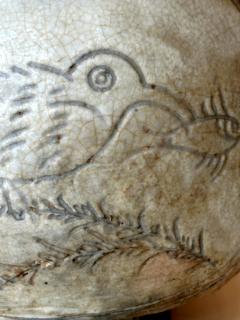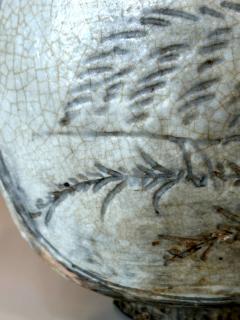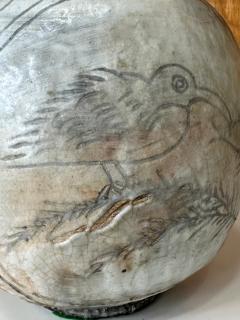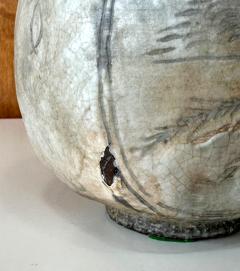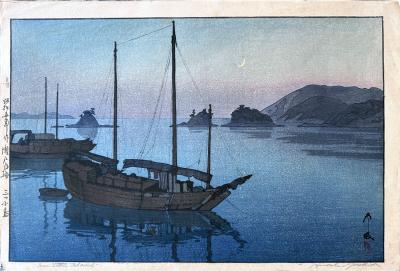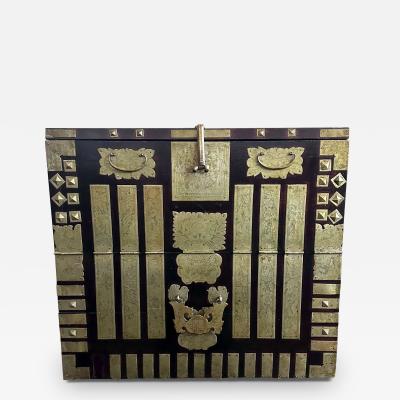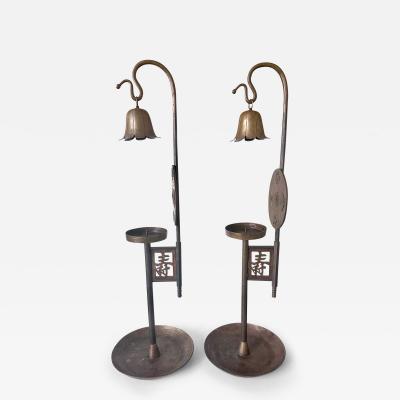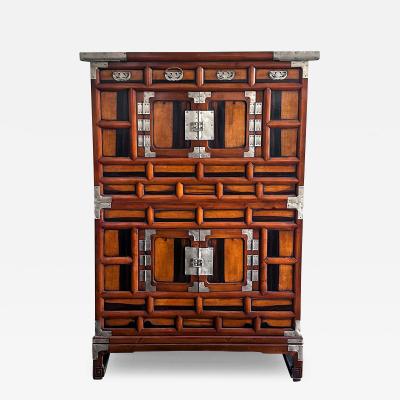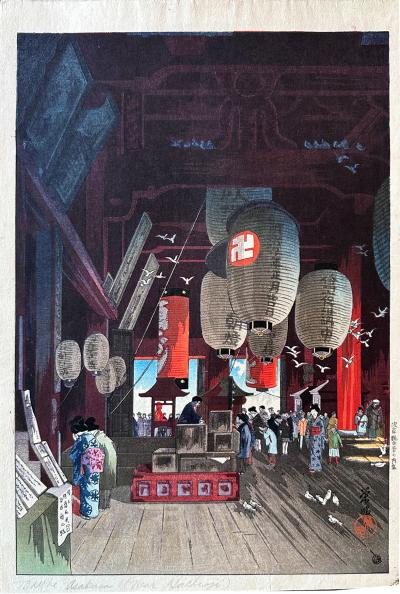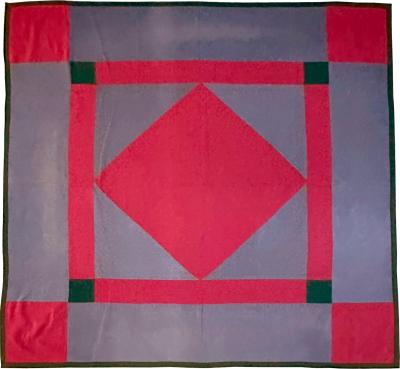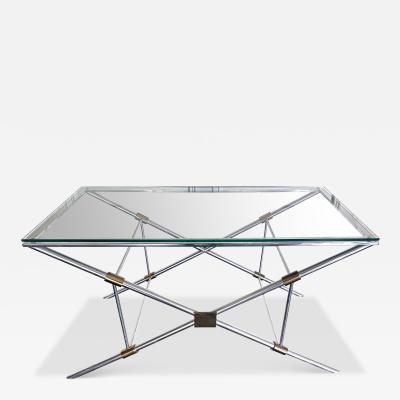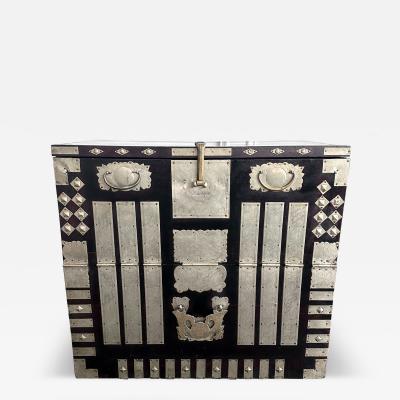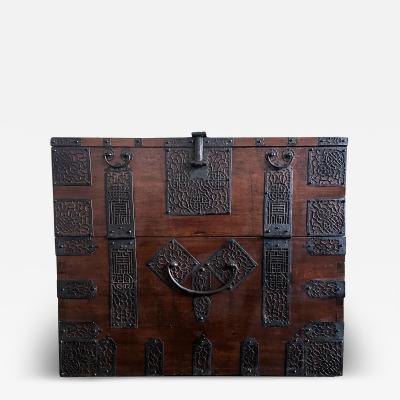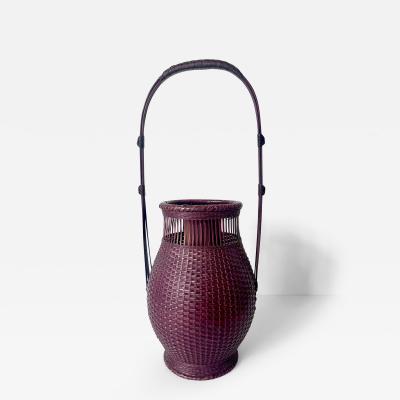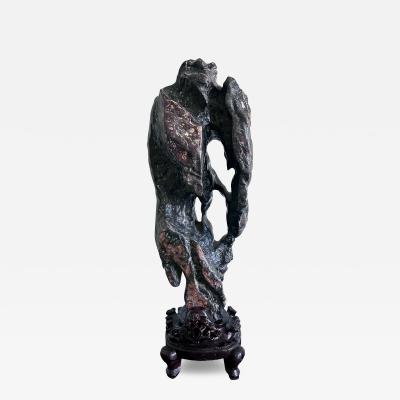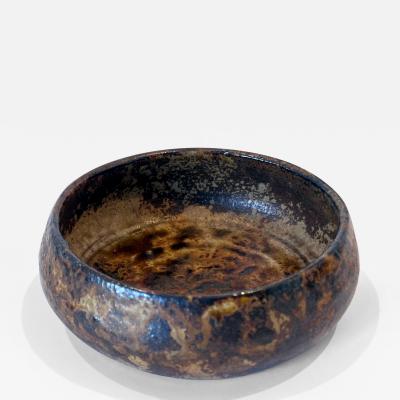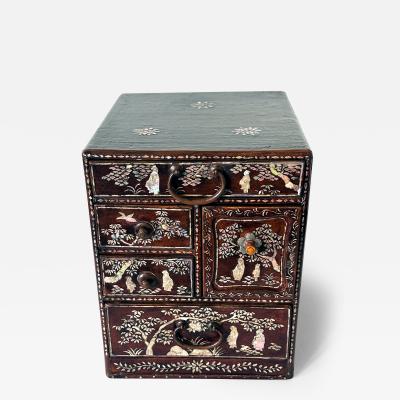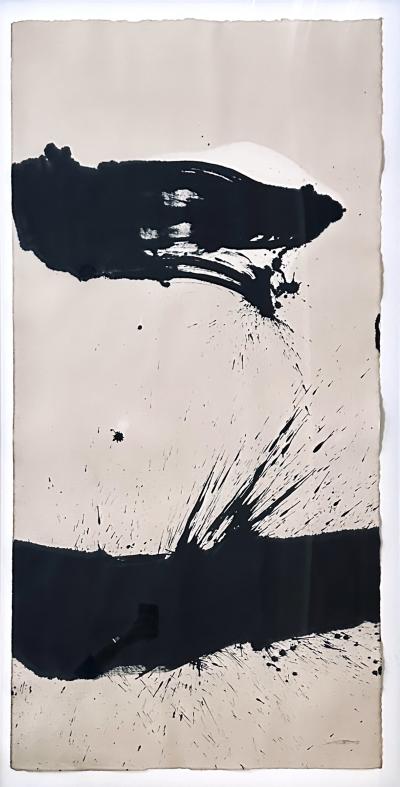Antique Korean Buncheong Flat Bottle Vase with Incised Designs
-
Description
A Korean Buncheong stoneware vase circa 15th century of Joseon Dynasty. The robust vase with thick walls was made in a bottle form with rounded square contour and flattened surfaces. It was made as a utilitarian vessel and traditionally used to store liquid such as wine. The primary incised design on the front and back features an egret bird (or the like) perching on a tree branch with a fish caught in its beak. The imagery was confined to a double-lined roundel following the edge of the facade. The folky pictorial is full of dynamic energy and playful charm. On the sides of the vase, there are secondary design of incised cascading patterns, likely represent water. The shoulder is surrounded with sgraffito design of double-border peony petals. The execution of the decoration is rustic typical of Buncheong ware made in that period.
Buncheong ware was made in early Joseon Dynasty, transitioning from the iconic celadon ware of Goryeo Dynasty and preceding white porcelain production in the later Joseon period. Incision and surface carving (sgraffito) were the main techniques used for surface decoration. The stoneware was first fired in iron-brown underglaze which formed a background. Then it was covered in white slip, on which a preconceived design was created by incision and sgraffito to expose the dark underglaze. Finally, a transparent glaze was applied on top which shows tends to show small crackles throughout, as seen on this piece. Buncheong ware in the early period have a more robust body with simple, but effective design, as also exemplified in this piece. The base ring of the vase was not covered with white slip or glaze, exposing a rather dark sandy clay.
As often the case, there are flaws occurred in the making on this type of Buncheong ware. There are a couple of dark specks and a surface crack through the glaze on one side, occurred from the firing process. The transparent overglaze was uneven, pooling in places, causing color unevenness in some areas manifesting in a slightly redder hue. There is also a small chip of lost glaze happened sometime in its life, which perfectly exposed the dark iron-brown underglaze (a window to the making process so to speak). Despite, or in a way because, of these imperfections, the piece presents an earthy honesty and a strong wabi-sabi appeal.
Reference: A similar bottle with incised fish design is in the collection of National Museum of Korea (duk 2963); he collection of Honolulu Museum of Art (2522.1).
Compared to lot 505 In Sotheby's New York sale "SUBLIME BEAUTY: Korean Ceramics from a Private Collection" 22 September 2022
Lot 353 in Christie's. Japanese and Korean Art, New York, 19 March 2019. -
More Information
Origin: South Korea Period: Pre 18th Century Materials: ceramic Condition: Good. As noted in the description, kiln flaws and a small old glaze chip, also minute glaze losses around the mouth rim. Please examine all the detail photos carefully. Creation Date: 15th century Styles / Movements: Asian, Traditional Patterns: Animal/Insects, Asian/Oriental, Handmade Incollect Reference #: 721176 -
Dimensions
W. 7.5 in; H. 8 in; D. 6.5 in; W. 19.05 cm; H. 20.32 cm; D. 16.51 cm;
Message from Seller:
Tishu, based in Atlanta, GA, offers a diverse collection ranging from Neolithic art to 20th-century collectibles, with a focus on Mid-century design, Japanese and Korean art, Asian textiles, and Contemporary Aboriginal art. Driven by a passion for timeless beauty, the gallery is open by appointment only and offers works that span 5,000 years of history. Reach them at 305-400-0561 or tishu@tishugallery.com.


